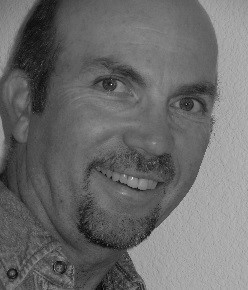In 2017, California experienced the most destructive wildfire season on record. There were over 9,000 fires that burned covering 1,381,405 acres. The fires destroyed anything in its path. Damaging more than 10,000 structures and resulting in over 40 causalities.
We sat down with Bruce J. Ford, Chief Appraiser of NorCal Quality Appraisals and California native who collaborated with other appraisers in the area to help those in need.
Buzz: Bruce, thank you for taking the time to chat with us today. I wanted to talk about your experience with the California wildfires and the disaster relief assistance you were involved in. But before we dig into that, can you tell us a bit about your background?
Bruce: Thank you for giving me the opportunity to speak about the recent disasters in Northern California that have afflicted our markets.
I am a Certified Residential Appraiser and have been actively appraising for over 26 years in the state of California. As a 3rd generation native Californian, I have lived and/or worked in every major market in our state. I specialize in Sonoma, Marin, and Napa counties – these are three of the most complex markets in the San Francisco Bay Area. They are also the most prestigious and difficult markets to value properties in the entire state. As a principal of my own firm, NorCal Quality Appraisals – I cover mostly residential and estate properties.
What does that mean? Due to our location as a world-class destination, the recent trend in higher values comes with higher risks. We were greatly harmed during the Great Recession when underwriting simple home loans turned into a fractured financial nightmare. But, during our recent bounce back from the Great Recession our markets have roared back in a tremendous way. The lure of Silicon Valley, the wave of new Internet technologies and the tremendous California climate have continued to pull us forward.
Buzz: As an appraiser during the disaster relief – what were some of your main responsibilities?
Bruce: When the disaster hit our area, it was tremendously frightening. Constant smoke, confusion, highway shutdowns, traffic, fear of the unknown. This fire was not under control for three weeks. I contacted all my family, friends, and fellow appraisers in my local network to make sure everyone was safe. If someone was without a home, we found them a room. In fact, two of our appraisers in our chapter lost their homes.
I live in a tract home in a medium-sized city in Sonoma County, but you have to remember, even though we are less than one hour from San Francisco we live and work in a highly non-conforming semi-rural market. Sonoma County has many custom gated estates, homes with prized vineyards, rugged rural parcels in steep canyons, not to mention, tiny post and pier, summer homes from 60-70 years ago that are now full-time residences. This is a very odd mix of properties in our market, meaning every day is a learning experience!
When the fire hit on October 7th, 2017, all lending stopped! There were no title reports, no closings, no open houses, the real estate market froze. I’m sure if there were escrows, those were frozen too. In many cases, appraisers were commanded to go back to properties and inspect them to make sure that the property was still standing (after the smoke cleared).
I’m the head of a local trade group called the REAA, which stands for Real Estate Appraisers Association. We have a North Bay chapter with close to 100 local appraiser members. We gathered our Board of Directors quickly and decided that the best way we can help is to empower our appraisers with information. We reached out to everyone we knew and built a three hour continuing education class, approved in California, from the “ground up” in less than 60 days.
The class entitled “Casualty Loss and Post Disaster Valuations” became the communication cornerstone of our appraisal organization with our fire victims. We then proceeded to find the best professionals in the market who could join our panel. We found a local attorney and an architect and also invited the local Sonoma County assessor. More importantly, we found an experienced Certified General appraiser who did over 1,000 valuations in the Oakland hills in the early 1990s after their epic fire disaster. We also enlisted a local home builder, a CPA, and a spokesperson for a consumer advocacy group who knew how to deal with insurance companies.
We took the process one step further by opening the course to the public. In fact, we did not charge any fees to the fire victims. We, as appraisers, were compelled to understand the market forces that affect the post-disaster appraisal assignment from various points of view. We engaged the top professionals in the community and in return, we had the highest attendance ever for an appraisal class. To this day, I still receive calls from homeowners, title companies, appraisers, and real estate agents telling me that it was the most engaging and empowering class they have ever taken on this subject.
Buzz: How is the appraising process different in an area which has experienced a natural disaster?
Bruce: The Cost Approach has changed tremendously in the last year. Commodity costs continue to rise. This is based on supply and demand. We are literally in the crosshairs of five difficult disasters that took place during 2017 – Puerto Rico, Houston, Miami, Santa Rosa, then two months later, Ventura, and Santa Barbara. The costs of labor is rising but think about the hard costs; copper wire, drywall, screws, nails, etc. The market is pushing prices upward.
My sister had been planning on building a new home on her vacant lot in the Truckee, CA for over two years. After the fires hit, she could no longer build her new home from scratch because the builder could not predict the final cost of materials.
Buzz: How did you see the appraiser/real estate industry change during and after the fires?
Bruce: I can only speak about our local markets. Let’s look at Santa Rosa, CA, our hardest hit city in the TUBBS fire. There are two local neighborhoods that were highly impacted: Coffey Park and Fountaingrove.
In Coffey Park, over 1,200 homes were lost. This area is more vanilla, more detached single-family tract-oriented, flat standard lot sizes. The market trends and values of this area follow the median values within the overall city of Santa Rosa market. And for good reason – good proximity to Highway 101, close to downtown, not far from local services, overall a good value for the typical home buyer.
Since the fire, re-building has happened faster, and the home resale price point is more reasonable. I envision Coffey Park being a strong market in the future due to its highly appealing location.
Now, consider Fountaingrove with over 1,519 homes lost. Fountaingrove is a very highly appealing, tree-lined upscale market on elevated streets overlooking the greater city of Santa Rosa. This micro-market was considered a move-up market for new home buyers with larger floorplans, beautiful views, and higher quality. Now, the issue of rebuilding becomes more acute.
With elevated, steep sites come higher engineering costs. The current trend to rebuild has been slower. This was a more prestigious high-end market whereby the home values were higher than the median values in the overall Santa Rosa market but what about the future? Even now, Fountaingrove has downward pressure on actively listed vacant lots because listings on existing homes continue to grow.
The owners of these homes may be an elderly couple or single person whose spouse has passed on. Many of these people raised their children in these Coffey Park or Fountaingrove homes but are now empty-nesters. They may not have the patience, time or money to rebuild. What about insurance company payment delays? How do you find a good contractor when so many are so busy? Many of these fire victims are people who do not have the motivation to rebuild a large-scale house in a market that has not quite recovered.
Buzz: Unfortunately, the state of California is experiencing more wildfires – do you think the state is better prepared as they recently just faced similar situations?
Bruce: The state has continued to update their emergency preparedness. The BIGGER QUESTION to the reader of this article:
- Are you prepared?
- Do you have a plan in place in case of a midnight evacuation?
- Do you have a pre-planned meeting place when family members are scattered?
- Do you have goods stored or emergency backpack next to the door? I do.
Buzz: What is the best advice you can give to appraisers who may be in areas that are affected by similar natural disasters?
Bruce: There is a non-profit consumer advocacy group called United Policy Holders (www.uphelp.org). They were part of the aforementioned class we sponsored in December 2017. They have the experience and resources to help any disaster victim throughout all 50 states.
Remember the world of insurance claims is very confusing. Arm yourself with information and patience, look for good legal advice, and seek CPA advice (in case of a taxable event).
Finally, please open up your HOME INSURANCE policy and review it. I have increased my home insurance policy to make up for the recently advancing costs to rebuild. Bottom line, it makes sense to do so. The overall message is to be prepared, just like the Boy Scouts tell us.
Buzz: Bruce, thank you for joining us and sharing your experiences.
Bruce: For anyone that has any questions, feel free to contact me at brucejford@yahoo.com
If you would like to submit an article to the Appraisal Buzz, please contact us at comments@appraisalbuzz.com








